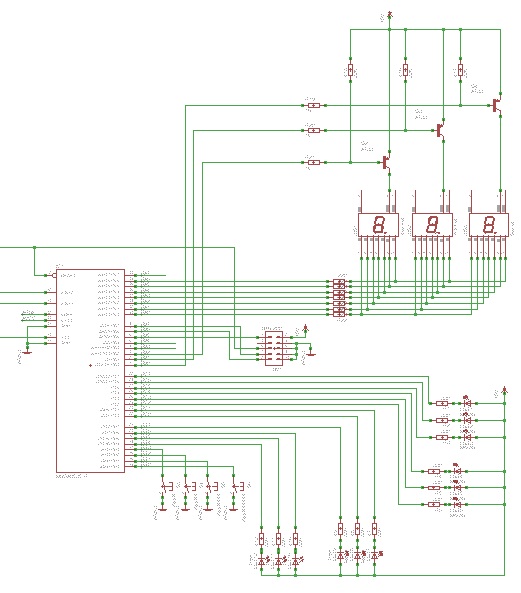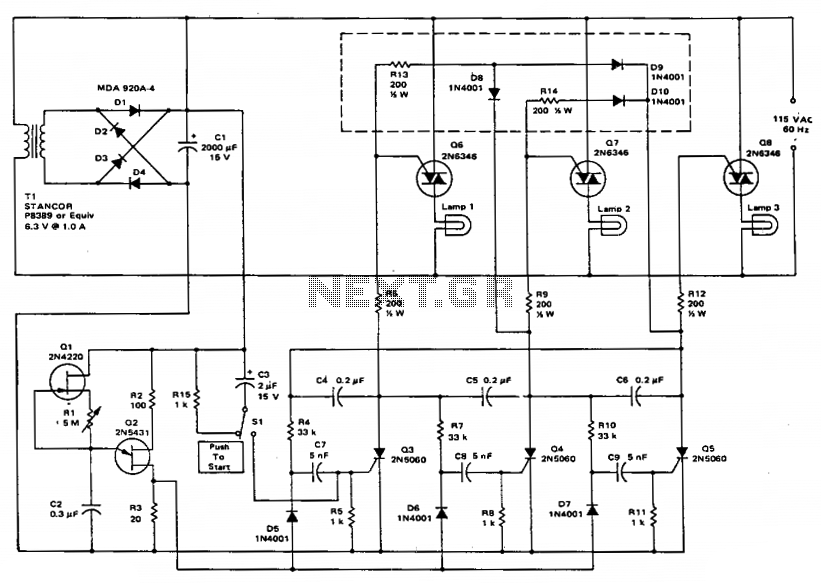
Miniature light flasher

The lamp should be a No. 122, No. 222, or other similar miniature incandescent lamp. R1 adjusts the flash rate.
The circuit incorporates a miniature incandescent lamp, specifically a No. 122 or No. 222 type, which serves as the primary light source. These lamps are known for their compact size and are commonly used in applications where space is limited. The choice of lamp affects the overall brightness, power consumption, and thermal characteristics of the circuit.
In this configuration, resistor R1 plays a critical role in controlling the flash rate of the lamp. By adjusting the resistance value of R1, the time constant of the circuit can be modified, effectively changing the frequency at which the lamp turns on and off. This adjustment allows for a customizable flashing effect, which can be useful in signaling applications or decorative lighting.
The circuit may include a timing mechanism, such as a capacitor in conjunction with R1, to create a delay in the lamp's on-off cycle. A typical arrangement might involve a simple astable multivibrator or a timer IC, which works in conjunction with R1 to achieve the desired flash rate. The selection of the capacitor value, alongside R1, will determine the duration of the lamp's illumination and the interval of darkness.
Overall, the integration of the No. 122 or No. 222 lamp with R1 for flash rate adjustment forms a versatile lighting solution that can be tailored to specific operational requirements.The lamp should be a No. 122, No. 222 or other similar, miniature incandescent lamp. R1 adjusts the flash rate.
The circuit incorporates a miniature incandescent lamp, specifically a No. 122 or No. 222 type, which serves as the primary light source. These lamps are known for their compact size and are commonly used in applications where space is limited. The choice of lamp affects the overall brightness, power consumption, and thermal characteristics of the circuit.
In this configuration, resistor R1 plays a critical role in controlling the flash rate of the lamp. By adjusting the resistance value of R1, the time constant of the circuit can be modified, effectively changing the frequency at which the lamp turns on and off. This adjustment allows for a customizable flashing effect, which can be useful in signaling applications or decorative lighting.
The circuit may include a timing mechanism, such as a capacitor in conjunction with R1, to create a delay in the lamp's on-off cycle. A typical arrangement might involve a simple astable multivibrator or a timer IC, which works in conjunction with R1 to achieve the desired flash rate. The selection of the capacitor value, alongside R1, will determine the duration of the lamp's illumination and the interval of darkness.
Overall, the integration of the No. 122 or No. 222 lamp with R1 for flash rate adjustment forms a versatile lighting solution that can be tailored to specific operational requirements.The lamp should be a No. 122, No. 222 or other similar, miniature incandescent lamp. R1 adjusts the flash rate.





